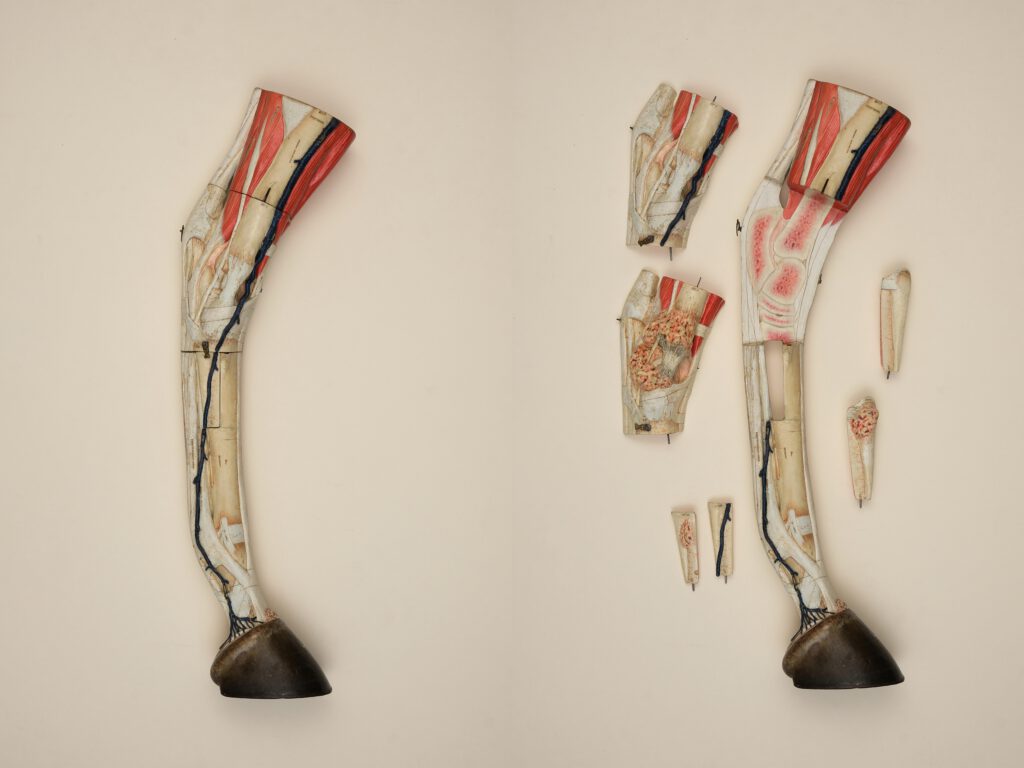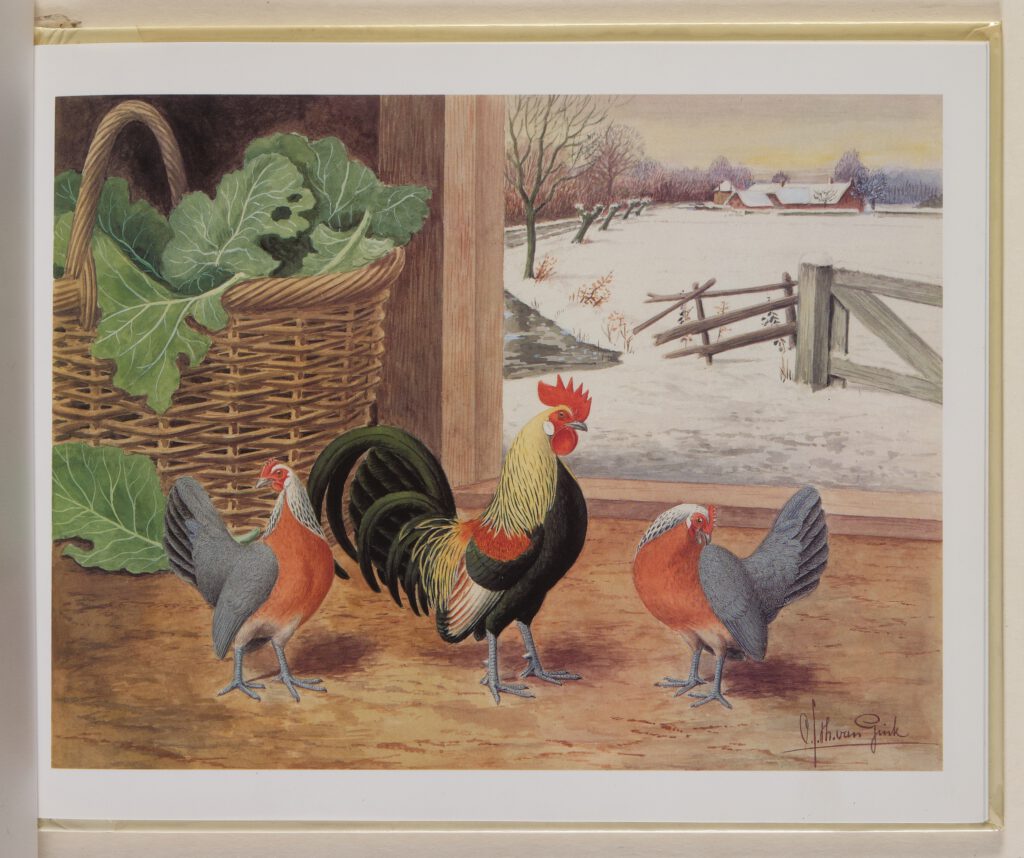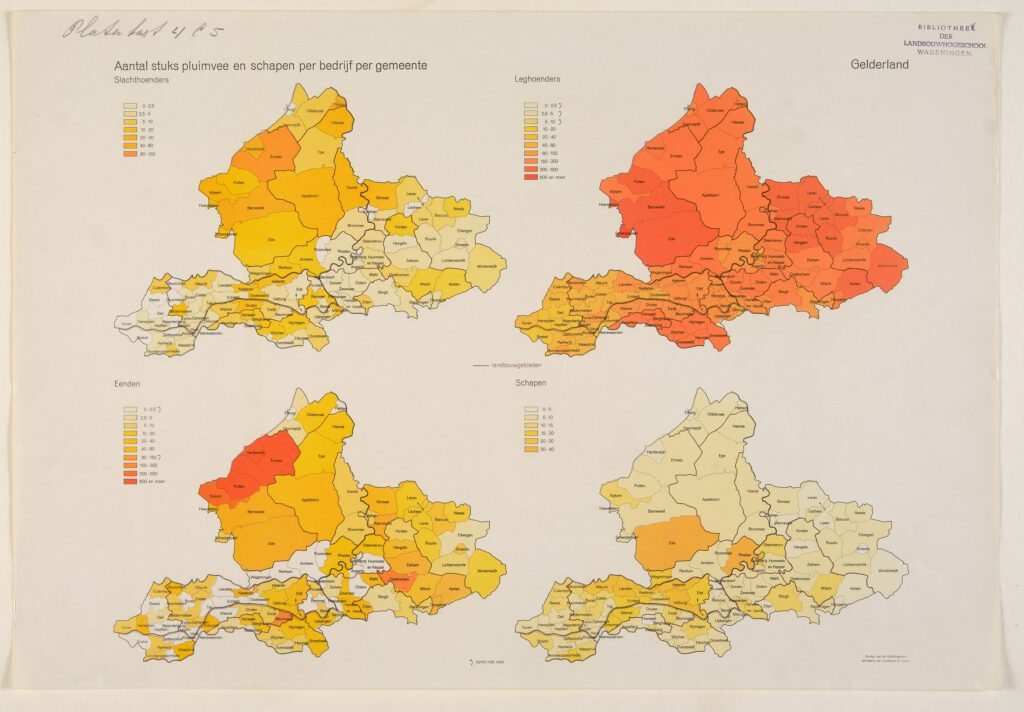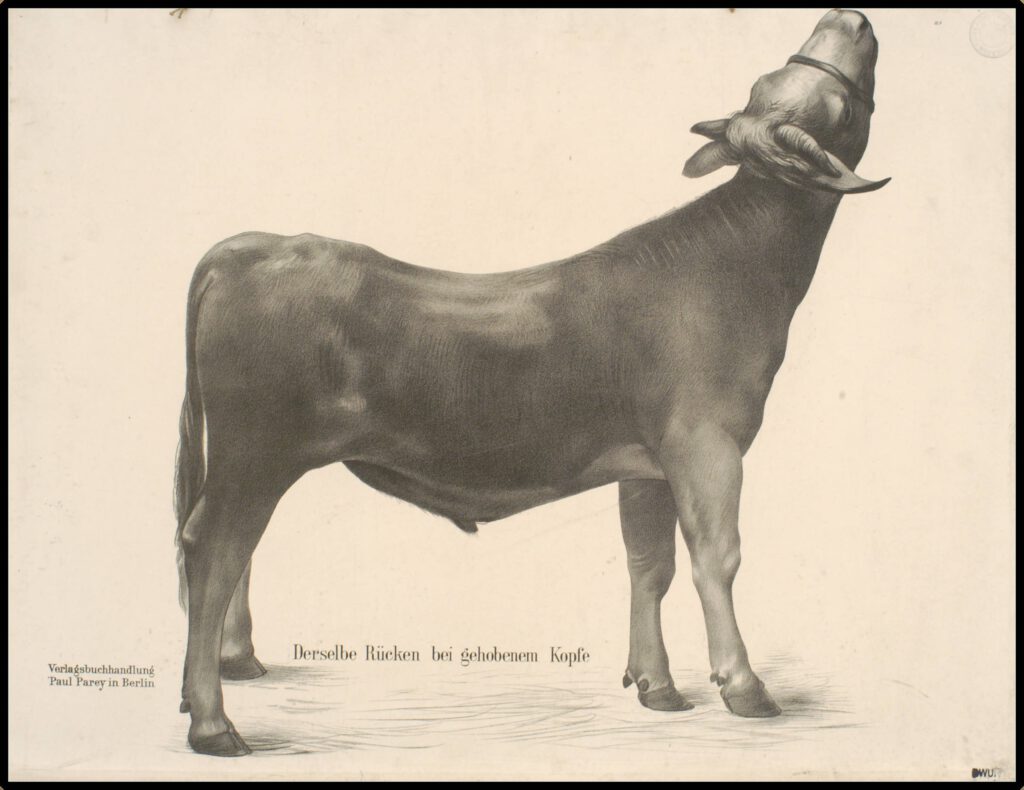Horse model, 1910

From: Handleiding bij het groote model van het paard, aanschouwelijk voorgesteld door vijf beweegbare platen / Eugenius Antonius Ludovicus Quadekker. Deventer : Kluwer, [ca. 1910]
The images of the anatomy of the horse were used in Animal Science education. Quadekker was born in Axel, Zeeuws-Vlaanderen, in 1854 and died in 1938 in Nijmegen. Quadekker also published a book about horse races painted by Otto Eerelman.









